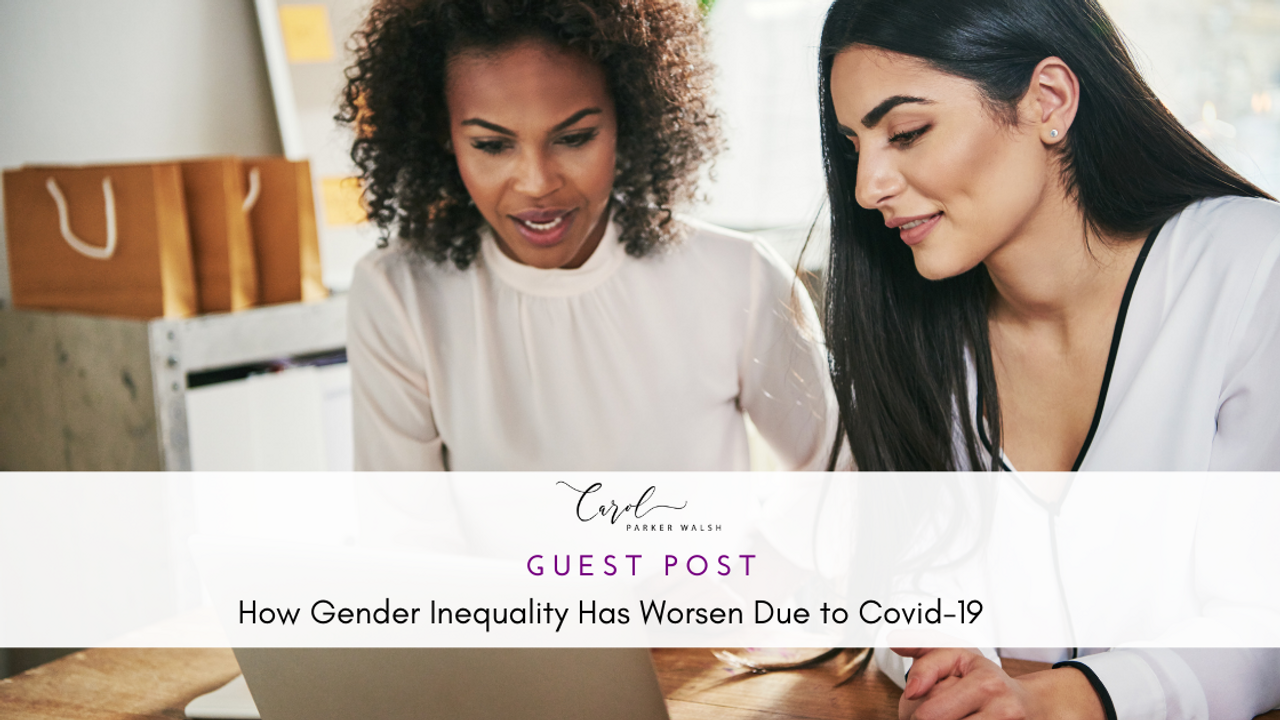How Gender Inequality Has Worsened For Women Due to Covid-19
Apr 15, 2021
This is a guest post written exclusive for Carol Parker Walsh, LLC by Alicia Grant
The global health crisis has devastated the country, leading to a widespread economic crisis and causing hundreds of thousands of citizens to lose their job. It's no doubt that everyone has felt the negative effects of the COVID-19 pandemic, but women bear the brunt of it.
Challenges Working Women Face Amidst COVID-19
Given the strict stay-at-home guidelines, schools were forced to shift to remote learning arrangements. Children staying at home continues to put pressure on parents — or at least one of them. A 2020 study published in the Sustainability Journal found that this contributes to significant gender-based consequences, particularly because women overwhelmingly take on childcare duties in the family, perpetuating ongoing gender biases against women. Those who couldn't afford child care were forced to leave their jobs and shoulder the full burden at home.
While women with well-paid positions have the resources to hire a nanny, finding one has proven difficult during COVID-19. With the added layer of health precautions to the highly selective process of choosing a hired caregiver or even a temporary babysitter, many parents would prefer live-in caregivers for their children. However, the child care sector's collapse due to the pandemic has caused a short supply of nannies and fully functioning daycares. This has made securing trusted childcare providers more challenging, thereby putting a strain on the women -- the primary caregiver and sometimes breadwinner, in the home. The closures have been especially stark for women of color, who predominantly make up the child care workforce.
Childcare issues, however, are not the only thing that has placed professional women at a greater disadvantage. One in four women struggles to manage their careers and are considering downshifting or leaving the workforce. The gender pay gap, a significant and long-standing issue that impacts every working household in this country, has only been exacerbated by the pandemic.
According to the U.S. Department of Labor, women with advanced degrees earn less than white men who hold bachelor's degrees. Women who work full-time earn 82.3 cents per every dollar men are paid, and it's predicted we won't reach parity until 2059. With over 800,00+ women losing their jobs during the pandemic, women have lost significant ground in their projected income for their career trajectory.
Overworked, undervalued, and underpaid, the emotional and physical toll on women has reached epic levels. As we continue to see more and more people getting vaccinated and schools reopening, there's hope for some impending relief. Unfortunately, this is tentative at best. With new COVID-19 variants threatening to undo global progress, one cannot say for sure if we're ready to return to some semblance of normalcy.
What Can Be Done?
Helping working women recover from the effects of COVID-19 will take more than a vaccine and partially open schools. Organizations will need to rethink the inherent gender biases in their corporate policies. One way to do this would be to continue offering flexible and remote work arrangements with special considerations for children in the home. Companies could also partner with child care facilities by giving allowances or introducing on-site childcare facilities. The proposed $39 billion stimuli in response to the child care crisis could provide organizations with innovative approaches to this issue.
Human resource managers are trained to oversee, guide, and communicate with other employees and are instrumental in creating gender-equity policies, cultivating a culture that's conscious of gender bias in the workplace, and providing more support to women's advancement into leadership roles throughout their organizations.
Paving the way for more women in executive roles goes a long way in promoting a culture that values women and allows their voices to be heard. Mentorship programs and greater networking opportunities will help to accelerate women into leadership roles. The presence of women in leadership often infuses an environment of progressive management, which emphasizes adaptability, communication, emotional intelligence, and empathy.
Despite the damaging effects of the pandemic on professional women and the many hurdles that women face today, there are opportunities for change and ways to limit, if not remove, the barriers that have hindered their ability to thrive in their careers.
Where are you in the spectrum of these challenges, and in what ways have you been able to navigate this terrain? Join a community of women who are supporting each other and achieving new heights in their careers.
Written exclusively for carolparkerwalsh.com by Alicia Grant
Unlock the #1 Issue Plaguing Today's Leaders
Get Time Savvy for Busy Leaders Today!
Time is the scarcest resource leaders have, and how it's allocated matters significantly. As a leader, mastering time management is crucial - it's essential for being present for your team, prioritizing work effectively, and driving your organization forward.
Get the Latest Leadership Insights
Sign up with your email address to receive news & updates about coaching, leadership development, and strategic advising!
We hate SPAM. We will never sell your information, for any reason.

